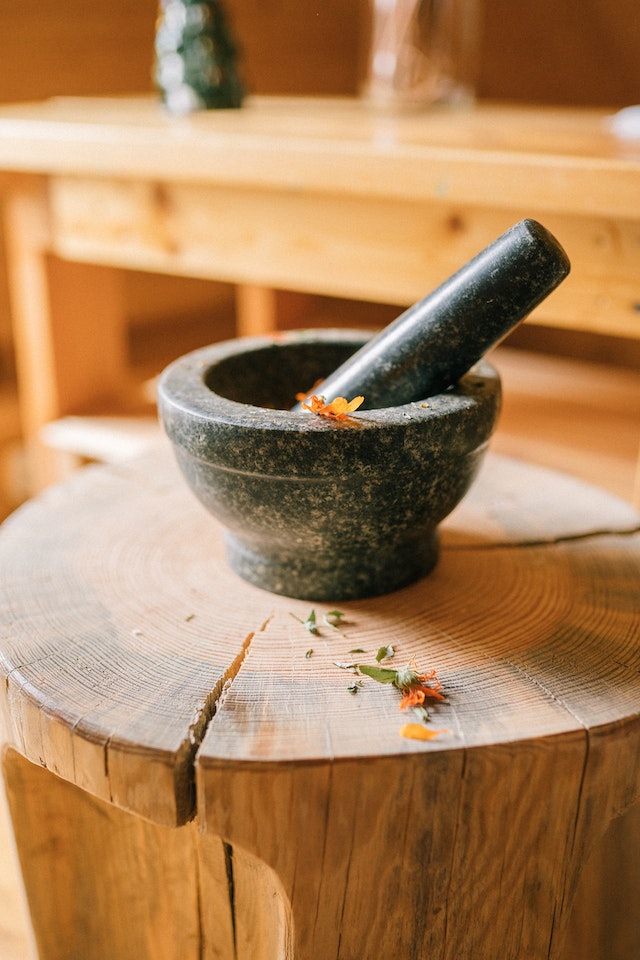Cysts are common growths that can occur on the skin or beneath it. They are typically filled with fluid or semi-solid material and can be painful or uncomfortable. While some cysts may go away on their own, others may require medical attention. However, making a poultice can help alleviate the discomfort associated with cysts and speed up the healing process.
A poultice is a simple and effective home remedy that involves applying a mixture of herbs, plants, or other natural substances to the affected area. The poultice can be applied either hot or cold, depending on the type of cyst and the severity of the symptoms. Here are the steps to make a poultice for a cyst:
Step 1: Gather the ingredients
To make a poultice for a cyst, you will need a few key ingredients. These include:
- Herb or plant material: Depending on the type of cyst you are treating, you may want to use a specific herb or plant material. For example, if you are treating a sebaceous cyst, you may want to use comfrey or plantain. If you are treating a breast cyst, you may want to use calendula or red clover. Other herbs and plants that can be used in poultices include chamomile, lavender, turmeric, and ginger.
- Warm water: You will need warm water to help activate the ingredients in the poultice.
- Clean cloth: You will need a clean cloth to apply the poultice to the affected area.
- Bandage: You may want to use a bandage to keep the poultice in place.
Step 2: Prepare the poultice
To prepare the poultice, follow these steps:
- Grind or crush the herb or plant material into a fine powder. You can use a mortar and pestle, a blender, or a food processor to do this.
- Add enough warm water to the herb or plant material to make a paste. You want the paste to be thick enough to stick to the skin, but not so thick that it is difficult to apply.
- Spread the paste onto the clean cloth. You want to make sure that the entire affected area is covered with the poultice.
- Fold the cloth in half so that the poultice is sandwiched between two layers of cloth.
- If desired, secure the poultice to the affected area with a bandage.
Step 3: Apply the poultice
Once you have prepared the poultice, it is time to apply it to the affected area. Here’s how to do it:
- Place the poultice on the affected area. You want to make sure that the poultice is in direct contact with the skin.
- Cover the poultice with a warm, damp towel or cloth. This will help the poultice to stay moist and warm.
- Leave the poultice on for 30 minutes to an hour. You may want to lie down and relax during this time to help the poultice work its magic.
- Remove the poultice and discard the cloth. You can rinse the affected area with warm water if desired.
Step 4: Repeat as needed
Depending on the severity of the cyst and the symptoms you are experiencing, you may need to repeat the poultice treatment several times a day for several days or even weeks. It is important to listen to your body and pay attention to how the cyst is responding to the treatment. If the symptoms do not improve or worsen, seek medical attention.
In conclusion, making a poultice for a cyst is a simple and effective home remedy that can help alleviate discomfort and speed up the healing process. By following the steps outlined above and using the right ingredients, you can make a poultice that is tailored to your specific needs. However, it is important to note that poultices should not be used as a substitute for medical treatment. If you have a cyst that is causing you pain or discomfort, or if you notice any changes in the size, shape, or color of the cyst, it is important to seek medical attention.
In addition to making a poultice, there are several other things you can do to help manage cysts. These include practicing good hygiene, avoiding tight clothing that can irritate the cyst, and applying warm compresses to the affected area. If you have a cyst that is causing significant pain or discomfort, your doctor may recommend draining the cyst or surgically removing it.
If you have any concerns about a cyst or are experiencing significant pain or discomfort, it is important to seek medical attention. With the right treatment and care, you can manage cysts and keep your skin healthy and comfortable.
- Top 10 AI Tools for Time Management in 2025: Boost Productivity and Reclaim Your Time - October 10, 2025
- The Sixth Sense: Signs You’re More Intuitive Than You Think - August 28, 2023
- Unpacking the Phrase: The Deep Meaning of ‘She Distanced Herself to Save Herself - August 2, 2023


